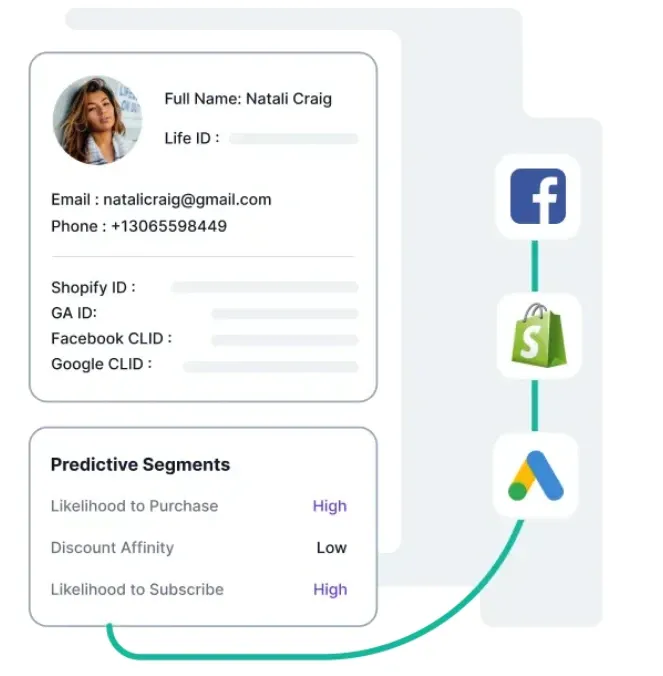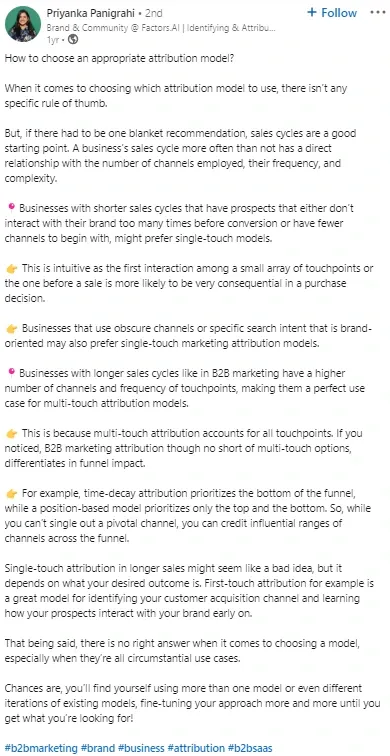The stakes for accurate marketing measurements have never been higher than in today’s ever-changing digital marketplace. A report by Forrester reveals that just over 53% of marketing decisions are influenced by marketing analytics, underscoring a significant gap in leveraging data effectively.
This disconnect becomes even more pronounced, considering Gartner’s finding that marketing budgets account for almost 11% of overall company revenue. Yet, despite substantial investment, marketers often need to work on measurement mistakes that can significantly impact the ROI and effectiveness of their campaigns.
In this blog, we delve into the most common measurement mistakes plaguing marketers today and explore possible solutions to marketing success in a data-driven world.
Mistake 1: Over-Reliance on Platform-Centric Reporting
One of the most prevalent mistakes in the realm of marketing measurement is an over-reliance on platform-centric reporting. This approach, often adopted for simplicity and accessibility, can lead to a myopic view of marketing performance. Typically, platforms provide data inherently biased towards their ecosystem, painting a skewed picture of campaign effectiveness.
A 2020 study by Nielsen highlighted that marketers relying solely on in-platform metrics are likely to miss about 25% of their audience reach.
This fragmented approach can lead to significant gaps in understanding the customer journey, as it spans multiple touchpoints across diverse platforms. Also, in-platform reporting needs more depth to analyze cross-channel interactions and their cumulative impact on consumer behavior.
The Solution: Embracing Unified Reporting
The solution to this challenge lies in embracing a more holistic approach to data analysis – Unified Reporting. Customer data platforms can help you aggregate and analyze data from multiple platforms, offering a comprehensive and unbiased view of the marketing landscape. Unified reporting transcends the limitations of single-platform data, allowing for a more accurate understanding of cross-channel performance and consumer behavior.
Unified Reporting
Moreover, modern-day CDPs have a layer of first-party identity graphs that help to recognize & attribute sales from anonymous visitors by stitching marketing & customer identities.
First-Party ID Graph
Mistake 2: Inaccurately Attributing Conversions
The advent of stringent privacy regulations and updates like Apple’s iOS 14.5 & 17 has reshaped the tracking landscape of digital marketing. Traditional methods, which heavily relied on user tracking across platforms and devices, are becoming increasingly ineffective. One of the critical challenges arising from this new privacy-first world is the need for accurate marketing attribution.
The Solution: Adopting Sophisticated Multi-Touch Attribution Models
Sophisticated multi-touch attribution models are a potent solution in this privacy-first era as they provide transparent performance reporting on the channel, campaign, ad set, ad, and creative level. It allows you to integrate data from a variety of sources, both online and offline, to create a comprehensive view of the customer journey. This integration is crucial in today’s omnichannel marketing environment, where consumers interact with brands across multiple platforms.
Customer Journey Mapping
Moreover, multi-touch attribution models use advanced analytics and machine learning to conclude aggregated data. Marketers can compare different attribution models, and look back windows and business KPIs to see how their campaigns work without compromising the users’ privacy.
A brand and community expert Priyanka Panigrahi shared this post about how to choose the right attribution model.
LinkedIn Post on Attribution by brand and community expert Priyanka Panigrahi
Mistake 3: Using Outdated Budget Allocation Methods
A common yet critical mistake in the realm of marketing is adhering to outdated budget allocation methods. Many businesses still rely on traditional, often static, budgeting approaches that fail to consider the dynamic nature of the digital marketing landscape. This outdated methodology can lead to suboptimal spending, where funds are not allocated efficiently across channels, resulting in diminished returns on investment.
The Solution: Using Marketing Mix Modeling and Saturation Curve
Marketing Mix Modeling (MMM) and Saturation Curves are essential tools for efficient budget allocation in marketing. MMM provides a comprehensive view of the effectiveness of various marketing channels by analyzing historical data. This analysis helps in understanding the return on investment (ROI) for different marketing channels, guiding businesses on where to allocate their budget for maximum impact. MMM is also useful in forecasting the potential outcomes of future marketing strategies, aiding in proactive budget planning.
Using Marketing Mix Modeling (MMM) For Budget Optimization
On the other hand, Saturation Curves are instrumental in identifying the point at which additional spending in a specific channel becomes less effective, known as the point of diminishing returns.
Using Saturation Curves for budget Optimization
This insight allows businesses to determine the optimal level of spending in each channel, avoiding unnecessary expenses. By comparing the performance of different channels through their respective saturation points, businesses can strategically reallocate budgets from saturated channels to those with higher potential returns.
Together, MMM and Saturation Curves provide a clear framework for businesses to allocate their marketing budgets effectively, ensuring that every dollar spent contributes to overall marketing success without wastage.
Mistake 4: Ignoring Incremental Outcome Measurement
A critical oversight in many marketing strategies is the neglect of measuring incremental outcomes. Incrementality refers to the additional value or impact generated specifically by a marketing activity, beyond what would have occurred without it. Without this measurement, businesses struggle to understand the true effectiveness of their marketing campaigns, potentially leading to misguided strategies and inefficient allocation of resources.
The Solution: Emphasizing Incrementality Testing
To truly gauge the effectiveness of marketing campaigns, it is imperative to focus on incrementality testing. This involves setting up controlled experiments to compare the results of a campaign against a baseline where the campaign did not occur. This approach provides a clear picture of the additional value created by specific marketing efforts, enabling businesses to refine their strategies based on tangible outcomes.
There are platforms that offer robust tools for incrementality testing, such as audience split testing and geo-experiments. These features allow marketers to conduct controlled experiments easily, measuring the incremental impact of their campaigns with precision.
For instance, with audience split testing, marketers can compare the behaviors of a group exposed to a campaign against a similar group that wasn’t, providing clear insights into the campaign’s effectiveness.
Geo-experiments further enhance this capability by allowing marketers to evaluate campaign performance in different geographical areas. This is particularly valuable for businesses operating in multiple regions, enabling them to tailor their strategies according to regional variations in consumer response.
Using Geo-experiments For Incrementality Testing
Mistake 5: Failure to Measure The Impact of Marketing on Retention & Profits
A frequently overlooked aspect in marketing measurement is the failure to assess the impact of marketing strategies on customer retention and long-term profitability. Many marketers focus intensely on immediate advertising performance metrics, such as click-through rates or impressions, neglecting the deeper analysis of how these efforts contribute to sustainable business growth and customer loyalty.
The Solution: Advanced Analytics and Cohort Analysis
The key to addressing this oversight is through the use of advanced analytics and cohort analysis. This approach involves segmenting customers into cohorts based on shared characteristics or behaviors and tracking their interactions and contributions over time. Using advanced analytical tools, marketers can gain deeper insights into how marketing efforts influence customer loyalty, repeat purchases, and overall profitability.
Using Cohort Analysis for Retention
Conclusion
Navigating the complex terrain of digital marketing requires more than just intuition; it demands precision and insight. Lifesight’s suite of tools addresses key marketing measurement challenges, enabling you to make data-driven decisions with confidence. From optimizing ad spend to dissecting the customer journey, Lifesight transforms challenges into opportunities for growth. Don’t let common measurement mistakes hold you back. Elevate your marketing strategy today.
Ready to revolutionize your approach to marketing measurement? Book a Demo with Lifesight and step into the future of data-driven marketing success.
You may also like
Essential resources for your success
























